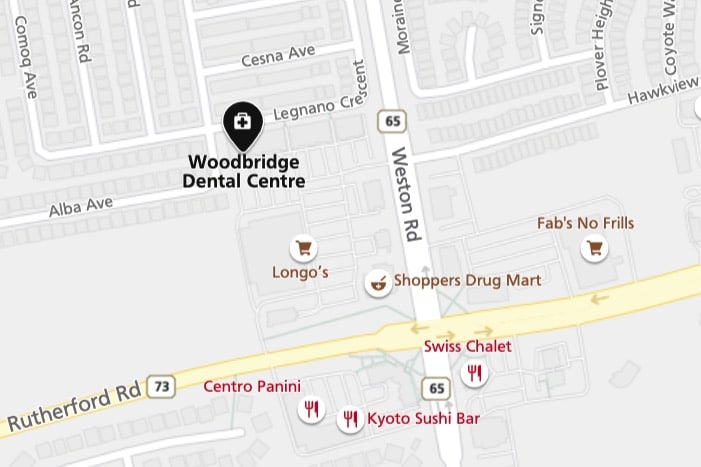Having damaged or discolored teeth can significantly affect your confidence and self-esteem. Fortunately, dental veneers offer a solution to improve your smile and restore your lost confidence.
Dental veneers are custom-made, thin shells placed on the front surface of your teeth and help improve your appearance. They can hide imperfections such as chips, stains, or unevenness. However, it’s important to note that veneers are an elective procedure, not medically necessary.
In this article, we will discuss the procedure, costs involved, and potential risks associated with getting veneers.
Types of Veneers for Your Teeth
After opting for dental veneers, you may be concerned about the different types of veneers available and the techniques used to achieve the desired results. But don’t worry. We can provide you with answers to your fundamental questions about veneers to help you gain a basic understanding. It is crucial to understand that most veneers are a permanent solution and cannot be removed once they have been affixed.
- Ceramic or Porcelain Veneers
Porcelain veneers appear similar to a ceramic shell made of medical-grade material covering the front of your natural teeth. A patient’s smile can be instantly transformed with dental veneers as each receives customized porcelain veneers to ensure a flawless fit.
They might not require as much intervention as a whole tooth-covering crown and are biocompatible as they do not adversely affect the gum tissue. The veneer is an excellent alternative to replacing teeth with an implant or a denture since it bonds to the person’s natural tooth. Moreover, porcelain veneers last 10 to 15 years with proper maintenance and care.
Procedure
If you are found eligible, you’ll only need a few appointments for a porcelain veneer. On the first veneer appointment, your dentist will extract a very small amount of enamel from your teeth. After taking impressions, the dentist will make a mold to make your permanent veneer. Then, the dentist puts a temporary veneer on your teeth until your second appointment.
After removing the temporary veneer, the permanent veneer is glued to your teeth with bonding glue. The dentist will then clean the teeth underneath and use an acidic substance to scrape them, roughening the tooth’s surface to make the veneer adhere better to the tooth.
- Composite Veneers
Composite veneers are customized to each person’s unique needs and are used in dental aesthetics for teeth whitening to impart a beautiful smile. It is a minimally invasive procedure that doesn’t require anesthesia. Composite veneers are applied over the tooth right away by the dentist. Veneers made of composite material can endure between 5 and 7 years. However, the lifespan of composite veneers depends on your habits too.
Procedure
You need a proper dental cleaning service and good oral hygiene, such as utilizing the recommended brushing technique and dental floss, to ensure that the teeth are cleaned thoroughly before installing the composite veneers. An appealing and brighter smile is possible due to the composite, which may be molded directly onto the tooth.
The process is completed on priority in a single session or across several, depending on the number of teeth that require treatment. You will start to see results after just one session because there is no need to carve the teeth since the glue is put directly into the enamel.
- Palatal Veneers
Not every veneer is made to be visible. The interior of the upper teeth is where palatal veneers are designed to attach. They are designed to treat tooth wear and tear and stop additional damage. Palatal veneers can be constructed of porcelain or composite materials besides their usual material of gold. Palatal onlays, commonly known as palatal veneers, repair damaged or worn-down teeth. Palatal onlays are a fantastic way to preserve the rest of the tooth while restoring the damaged area.
Procedure
Although challenging, getting palatal onlays involves having your enamel chipped and then having it shade-matched, just as with other veneers. Unfortunately, it may be rather expensive and frequently calls for multiple visits.
- Lumineers
In contrast, conventional veneers, lumineers require less dental work and preparation. “No-prep” veneers are a common name for them. They’re “ultra-thin” laminate rather than porcelain. Dentists treat discolored and oddly shaped teeth with Lumineers, just like conventional veneers. Also, they feel slick and silky to the touch.
Compared to conventional porcelain veneers, lumineers are slightly more translucent and thinner.
You don’t need to crush your teeth before applying Lumineers because they are thinner than conventional veneers. Yet with proper maintenance, Lumineers might last just as long as conventional porcelain veneers.
Procedure
After your initial consultation, you’ll still need to make at least two appointments. Because your dentist won’t need to trim or otherwise “prep” your teeth, the initial appointment will be shorter. All that is required is an impression or mold. Afterward, your dental laboratory receives the mold, and between two to four weeks, you will receive your customized Lumineers.
Unlike standard veneers, you don’t need to wear temporary veneers while waiting for your custom Lumineers. A second appointment is scheduled when they’re prepared so that your dentist can bind them to your teeth
- Detachable Veneers
Removable veneers, also called Snap-On veneers, are dental prosthetics that are bonded to your injured tooth. Removable dental veneers are a type of dental prosthesis that can enhance the appearance of your teeth.
They are created from a thin layer of translucent material glued to the front of your teeth. They come in two varieties—immediate and custom-made clip-in veneers—and are constructed of resin. Removable veneers can be worn or taken out as required and are designed to look much like natural teeth.
Procedure
Applying dental veneers is an easy process. Your teeth will first be cleaned and prepared for the surfaces by your dentist. The veneers will then be produced in a lab using an impression of your teeth that the dentist took. When the veneers are prepared, your dentist will use a unique glue to adhere them to your teeth.
How Much Do Veneers Cost?
Depending on your demands and expectations, the price of veneers varies from patient to patient. The standard cost of veneers is –
- Porcelain veneers — $500-$2,500 (per tooth)
- Composite veneers — $250-$1,500 (per tooth)
- Detachable veneers — $300 or more (per arch)
- Lumineers — $700-$2,000 (per tooth)
- Palatal onlays — $650-$1,200 (per tooth)
But, to fully understand all the treatments, prices, sittings, and severity of adverse effects, which might differ from one specialist to another. The easiest option to obtain a price quote is to schedule an appointment with a dentist.
Hazards & Adverse Effects of Veneers
There are dangers with any dental procedure. With the right precautions, the risks are manageable and not fatal. Veneers may cause various diseases and adverse effects, such as:
- Sensitive Teeth
To put veneers, the dentist normally removes a layer of enamel. After implantation, it could make teeth somewhat more sensitive while consuming hot or cold foods and beverages.
In addition, a little tooth sensitivity is anticipated for the first three weeks following the placement of a dental veneer. If this sensitivity persists for over 3 to 6 months. A natural tooth’s nerve may have become inflamed during surgery, leading to an infection. If problems persist for too long, contact your dentist for medical attention.
- Bruised Gums
It will take some time for the gum tissues to adapt to the new veneer, although you might have slight gum inflammation. Your dentist can identify the underlying cause of the irritation by performing a thorough examination. Don’t forget to attend the post-operative check-up because it’s important to detect any complications from the procedure.
- Colour Irregularity
There is a chance that the veneers won’t perfectly match the shade of the surrounding teeth. Some dental veneers develop stains or discoloration around their margins. These stains and discolorations are particularly frequent when the dentist seals the veneers with too much moisture. Also, their color isn’t altered after dental veneers are bonded.
Restoration and Post-Process Care
Because of their durability, veneers have been proven to last for many years before needing to be changed. If you want to keep your dental health and the duration of your recovery, it’s crucial to schedule routine examinations and cleanings with your dentist to avoid further damage.
To reduce the chance of injury, avoid biting or chewing on hard things like nuts, shells, or bones to reduce the chance of injury. Moreover, you should refrain from using your teeth to open or shred packets. Dental Veneers often don’t require any particular care.
Maintain your oral hygiene practices, such as brushing, flossing, and using an antimicrobial mouthwash to shine your beautiful smile.






